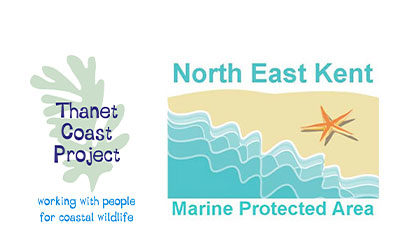Fossil Code
respect coastal wildlife
- Tread carefully along the shore to minimise your impact to coastal wildlife and the environment beneath your feet.
- Avoid putting coastal birds to flight – especially between 1 October and 31 March at high tide or at night, and at the main bird roosts.
promote responsible fossil and mineral collecting
- Avoid digging and collecting from the cliffs as they are fragile and hazardous, and there are more available on the beach
- When collecting from the beach, be aware that some areas are privately owned
- Collect from loose material on the beach by beachcombing, or from natural cliff falls.
- Avoid digging for unexposed fossils or the use of tools
- Do not over-collect, leave some for others to find
- Report unusual or important finds – see below* If unsure seek specialist advice.
- Report man-made artifacts – to the Kent County Council Archaeological Finds Officer on 01622 221544
Note: The fossil belongs to the landowner. However, if the finder has followed this fossil code, such as reporting an unusual find, then it will be kept by the finder on land owned by Thanet District Council, or if the landowner agrees.
promote safety
- Wear suitable clothing and footwear
- Check the tide times and weather forecast – to avoid getting cut off from the shore and for wearing suitable clothing for the day.
- Tell someone where you’re going and expected time of return.
- Check bay signs for activity zones, bylaws and local beach safety warnings.
- Be aware of local hazards and conditions
- taking care near the cliff edge or base, and avoid the cliff base be vigilant as cliff falls can occur suddenly and without much warning.
- Take care when walking on slippery rocks, slopes or near the edge of promenades or near soft sand and mud.
- Ammunitions are found in this area. If unsure, please call 999
- Look out for other information, including the other Thanet Coastal Codes
consider other users and be environmentally friendly
- Where possible, take pictures of fossils and the natural environment
- instead of removing fossils
- Take your rubbish home and report any potential hazards
- Respect the rights of all other users
- Don’t block public access or right of way and use official car parks
This draft Thanet Coastal Code was first drafted following a stakeholder workshop in 2008.
Fossils on the Thanet coast (PDF, 229KB)
Fossils finds
You can collect one or two samples of the usual fossils found on our beaches – these include Micraster (heart shaped urchin) and Echinoscorys (helmet shaped urchin), Inosceramus (oyster shell pieces), Spondylus (large cockle shaped shell), Belemnites (bullet shaped fossil squid) from chalk and flint, or Shark’s teeth from sands. These fossils do not need to be reported
Unusual and rare finds need to be reported
Remember to report the precise location and position in the cliff or foreshore where the fossil was collected. These fossils include fish fossils, rarer belemnites, ray jaws, crabs or birds, and large fossils like Ammonites.
If unsure, please let us know!
Local museums:
Canterbury Area
- Canterbury Museum 01227 862000
- Whitstable Museum
- Seaside (Herne Bay) Museum
- Maidstone Museum 01622 602838
Thanet Area
- Monkton Nature Reserve 01843 822666
- Quex Museum
Other information sites:
- Kent Geologists’ Group
- Kent & Medway Biological Records Centre – Local environmental records centre
- UK Fossils – Kent

